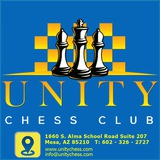✴️ #about_Tarrasch
🔸 Siegbert Tarrasch
🔸 Grman Chess master
🔰 Siegbert Tarrasch was one of the strongest chess players and most influential chess teachers of the late 19th and early 20th century. Tarrasch was born in Breslau, Prussian Silesia.
🔘 Full name: Siegbert Tarrasch
🔘 Country: Germany
🔘 Born: 5 March 1862
Breslau, Province of Silesia, Kingdom of Prussia
(now Wrocław, Poland)
🔘 Died: 17 February 1934 (aged 71)
Munich, Germany
🔰 Siegbert Tarrasch, German chess master and physician who was noted for his books on chess theories.
Tarrasch won five major tournaments consecutively between 1888 and 1894. His best achievement was probably in 1898 at Vienna, where he tied for first with the American Harry Nelson Pillsbury, whom he defeated in a play-off match. After 1907 he participated in more than 20 international matches but never placed in the top three positions. Especially disappointing to him was his loss to Emanuel Lasker in 1908 for the world championship. Despite his failures, Tarrasch is best remembered for his books, especially The Game of Chess (1935), which developed and popularized Wilhelm Steinitz’s theories while differing with the master about what constituted a small advantage.
♦️ A memorable game by Tarrasch!👇
▪️ Rudolf Spielmann vs Siegbert Tarrasch
▪️ Maehrisch-Ostrau (1923), Ostrava CSR, rd 11, Jul-14
▪️ King's Gambit: Falkbeer Countergambit. Charousek Gambit Main Line (C32)
♦️ Review and download PGN file👇
@unitychess
🔸 Siegbert Tarrasch
🔸 Grman Chess master
🔰 Siegbert Tarrasch was one of the strongest chess players and most influential chess teachers of the late 19th and early 20th century. Tarrasch was born in Breslau, Prussian Silesia.
🔘 Full name: Siegbert Tarrasch
🔘 Country: Germany
🔘 Born: 5 March 1862
Breslau, Province of Silesia, Kingdom of Prussia
(now Wrocław, Poland)
🔘 Died: 17 February 1934 (aged 71)
Munich, Germany
🔰 Siegbert Tarrasch, German chess master and physician who was noted for his books on chess theories.
Tarrasch won five major tournaments consecutively between 1888 and 1894. His best achievement was probably in 1898 at Vienna, where he tied for first with the American Harry Nelson Pillsbury, whom he defeated in a play-off match. After 1907 he participated in more than 20 international matches but never placed in the top three positions. Especially disappointing to him was his loss to Emanuel Lasker in 1908 for the world championship. Despite his failures, Tarrasch is best remembered for his books, especially The Game of Chess (1935), which developed and popularized Wilhelm Steinitz’s theories while differing with the master about what constituted a small advantage.
♦️ A memorable game by Tarrasch!👇
▪️ Rudolf Spielmann vs Siegbert Tarrasch
▪️ Maehrisch-Ostrau (1923), Ostrava CSR, rd 11, Jul-14
▪️ King's Gambit: Falkbeer Countergambit. Charousek Gambit Main Line (C32)
♦️ Review and download PGN file👇
@unitychess
For someone to win, another must lose... Grischuk joins the #SinquefieldCup leaders!
https://bit.ly/2PqQtks
https://bit.ly/2PqQtks
Nakamura,-Hikaru_vs_Grischuk,-Alexander_2018-08-20.pgn
8 KB
🔹 Nakamura, Hikaru (2777) vs. Grischuk, Alexander |Sinquefield Cup 2018
🔹 PGN format
🔹 Analysed by Chess.com
@UnityChess
🔹 PGN format
🔹 Analysed by Chess.com
@UnityChess
This media is not supported in your browser
VIEW IN TELEGRAM
☑️ Leipzig Olympiad (Men) fin-A (1960)
⚪️🇬🇧 Leonard William Barden
⚫️🇨🇭 Viktor Korchnoi (USSR player)
Sicilian Defense: Paulsen. Bastrikov Variation (B47)
Result : 0-1
@UnityChess
⚪️🇬🇧 Leonard William Barden
⚫️🇨🇭 Viktor Korchnoi (USSR player)
Sicilian Defense: Paulsen. Bastrikov Variation (B47)
Result : 0-1
@UnityChess
Julian Hodgson, Nigel Short, Leonard Barden and Victor Korchnoi (London, 1976). The photograph comes from Barden's 1977 book "Chess. Master the moves."
@UnityChess
@UnityChess
54... Qh6?
Aronian could have finished the game with 54... Kg8.
A) 55. Rd7 Rxf2+ -+
B) 55. Rf5 g4 56. Qh5 Rxf2+ -+
C) 55. Rf3 g4 -+
55.Qxh6+ Kxh6 56. Kg1 a4 57. Rc7 a3 58. Rxc6+ Kh5 59. Ra6 Bb2 60.c6 Ra1+ 61. Kg2 Rc1 1/2-1/2
Aronian could have finished the game with 54... Kg8.
A) 55. Rd7 Rxf2+ -+
B) 55. Rf5 g4 56. Qh5 Rxf2+ -+
C) 55. Rf3 g4 -+
55.Qxh6+ Kxh6 56. Kg1 a4 57. Rc7 a3 58. Rxc6+ Kh5 59. Ra6 Bb2 60.c6 Ra1+ 61. Kg2 Rc1 1/2-1/2
36. Qe4??
36. Nh5+ Kf8 37. Qd4 would have put up more stubborn resistance.
36... Ra4 37. Ne8+ Kf8 38. Qc6 Rc4 39.Qd6+ Kxe8 40. Ra1 Rc1+ 0-1
36. Nh5+ Kf8 37. Qd4 would have put up more stubborn resistance.
36... Ra4 37. Ne8+ Kf8 38. Qc6 Rc4 39.Qd6+ Kxe8 40. Ra1 Rc1+ 0-1
22.Nxd7+!!
Exchanging his nice knight for Petrosian's bad bishop, and received a technically winning position. After this exchange, Fischer takes control of the open c-file, and this consideration is more important than the superiority of the knight on c5 over the bishop on d7. In positions with a superior pawn structure, the exchange of pieces increases your advantage. The game ended quickly:
22...Rxd7 23.Rc1 Rd6 24.Rc7 Nd7 25.Re2 g6 26.Kf2 h5 27.f4 h4 28.Kf3 f5 29.Ke3 d4+ 30.Kd2 Nb6 31.Ree7 Nd5 32.Rf7+ Ke8 33.Rb7 Nxb4 34.Bc4
1-0
Exchanging his nice knight for Petrosian's bad bishop, and received a technically winning position. After this exchange, Fischer takes control of the open c-file, and this consideration is more important than the superiority of the knight on c5 over the bishop on d7. In positions with a superior pawn structure, the exchange of pieces increases your advantage. The game ended quickly:
22...Rxd7 23.Rc1 Rd6 24.Rc7 Nd7 25.Re2 g6 26.Kf2 h5 27.f4 h4 28.Kf3 f5 29.Ke3 d4+ 30.Kd2 Nb6 31.Ree7 Nd5 32.Rf7+ Ke8 33.Rb7 Nxb4 34.Bc4
1-0
